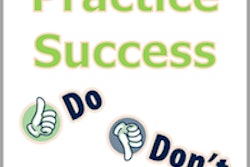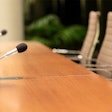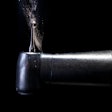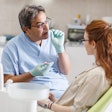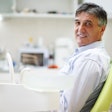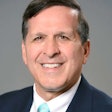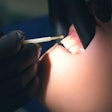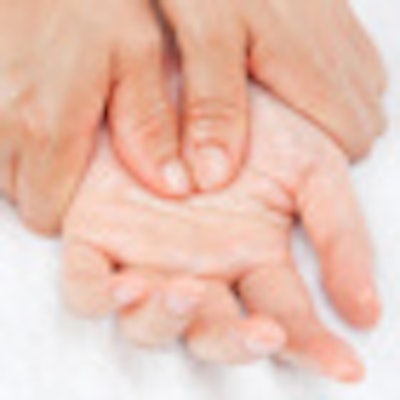
A start-up company formed by a group of current and former students from Miami University is targeting a common problem in dentistry for which there are few effective solutions: the gag reflex.
PharynMed was formed earlier this year to commercialize a unique device developed by Donna Scarborough, PhD, an associate professor of speech pathology and audiology at the university, and Michael Bailey-Van Kuren, PhD, an associate professor of mechanical and manufacturing engineering.
Five years ago, while working on a research project about speech therapy for small children, Scarborough conceived of a device that presses on the palm of the hand to help suppress the gag reflex.
— James Stahly, CEO, PharynMed
"She was working with children with feeding issues who couldn't swallow medications or certain foods," explained James Stahly, a dental industry veteran who recently joined PharynMed as CEO. "She would comfort them by holding their hands, and she began to wonder if there was a correlation between this and the gag reflex, and if there was a device that could do this."
She partnered with Bailey-Van Kuren and together they designed and began testing a glove-like acupressure device that diminishes the gag reflex in speech therapy and in people undergoing dental procedures or taking medications. It works by applying pressure to a very specific area of the palm of the hand, Stahly noted. The pressure is applied to either hand for 10 to 15 minutes before treatment is administered, and the effect lasts long enough for the procedure to be completed.
"It moves the site of the gag reflex further back into the throat so that those with hyperactive gag reflexes don't have that problem," Stahly said. "It doesn't permanently remove the gag reflex, it just suppresses it for a period of time."
A 2008 study co-authored by Scarborough and Bailey-Van Kuren found that by applying pressure to a specific point on the palm the gag reflex could be altered and its trigger point moved posteriorly, decreasing the likelihood of a gag reflex being triggered during dental procedures (Journal of the American Dental Association, October 2008, Vol. 139:10, pp. 1365-1372).
A number of techniques have been tried over the years to diminish the gag reflex in clinical settings, including distraction, anesthesia, acupuncture, hypnosis, and behavior modification. "But for most dentists and other medical practitioners, a less invasive approach such as acupressure would be an attractive alternative," Scarborough and colleagues wrote in the JADA article.
"There is a nerve that runs from the palm of the hand into the area of the brain that controls central nervous functions, including blood pressure and respiratory rate,"
Stahly said. "And Dr. Scarborough has discovered that the gag reflex can also be influenced by applying pressure to the same nerve, with no associated change in blood pressure or respiratory rate."
Student class project
These preliminary study findings prompted the university to apply for a patent for the device. University officials then took a unique next step: They approached the Farmer School of Business to see if students there would be interested in developing a business and marketing plan for the device.
In fall 2009, as part of a semester-long entrepreneurship class, four students in the program began developing a business and marketing plan, then continued their work through another program designed to help Miami University entrepreneurship students develop potential businesses by the time they graduate.
The resulting business plan won first place in a university business plan competition and second place at a Northern Kentucky University competition.
"We then decided to pursue this as a full business," said Wiley Burch, who graduated last year with a degree in interdisciplinary business management. "So now we are busy meeting with investors and regulatory specialists, and building a management team to take the product forward to commercialization."
Burch and fellow team members Alexandria Lucchese, Kevin Nelson, and Chris Blanchard formed PharynMed, and in January they hired Stahly, a former president of Henry Schein North America Dental Group.
And on April 15, PharynMed signed a two-year, royalty-free licensing agreement with the university for the device. Now the company is working to gain additional investment capital and move beyond the prototype phase so they can begin clinical trials and move into the U.S. Food and Drug Administration regulatory process. The goal is to have a product on the market within two years -- although they are still working on a name for the device and have yet to settle on a price, according to Stahly.
"From a dental care point of view, people who have this kind of problem, for them to go to a dentist is a big deal. They are extremely anxious and nervous and potentially really embarrassed," Stahly said. "This device is clinically proven, totally noninvasive, easy to use, with no observed side effects in testing so far. So from a practice productivity and patient comfort point of view, this is clearly a product that addresses a need that there is clearly no good solution for."





